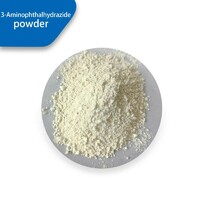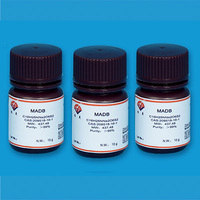ADPS N-Ethyl-N-(3-sulfopropyl)-3-methoxyaniline sodium salt
Product Quick Detail
- Place Of Origin
- China (Mainland)
- Minimum Order
- 1
- FOB Price
- USD $20.60 / Piece
- Packaging
- 50g/bottle
- Delivery
- 15 Days
Specifications
In the field of biochemistry, chromogenic substrates are one of the commonly used tools in laboratories, which can produce color changes under specific enzyme catalyzed reactions, thereby achieving quantitative determination of target substances. Among them, ADPS (N-ethyl-N - (3-sulfopropyl) -3-methoxyaniline sodium salt dihydrate) has received widespread attention and application as a highly sensitive and stable chromogenic substrate. This article will focus on exploring the reliability of ADPS chromogenic substrates under changes in acidity and alkalinity, and analyze their advantages in practical applications.
1、 Basic principles of ADPS chromogenic substrates
ADPS chromogenic substrates undergo coupled oxidation reactions with reactants such as hydrogen peroxide (H2O2) under the catalytic action of horseradish peroxidase (HRP) or peroxidase (POD), generating quinone imine compounds. This substance exhibits a significant increase in absorbance at specific wavelengths (such as 500nm), enabling quantitative determination of the target substance.
2、 The Effect of pH Changes on ADPS Color Reaction
In practical applications, the pH value of the reaction system is an important influencing factor. Fortunately, ADPS chromogenic substrates exhibit high stability under pH changes. Within a certain range, fluctuations in pH values do not significantly affect the color reaction of ADPS, thereby ensuring the accuracy and reliability of the measurement results.
This stability is mainly due to the structural properties of ADPS molecules. The sulfonic acid groups in ADPS molecules enable them to exhibit good solubility and stability in aqueous solutions, while the aniline groups in their molecular structure serve as key sites for interaction with key substances in enzyme catalyzed reactions. This structural characteristic enables ADPS to maintain relatively stable color development performance at different pH values.
3、 Reliability analysis of ADPS chromogenic substrates under pH changes
To verify the reliability of ADPS chromogenic substrates under pH changes, we conducted a series of experiments. In the experiment, we selected buffer solutions with different pH values as the reaction system and added equal amounts of ADPS and HRP to them. Then, we added different concentrations of hydrogen peroxide to the reaction system and measured the absorbance values after the reaction.
The experimental results showed that the color reaction of ADPS exhibited a good linear relationship at different pH values, and the absorbance value also showed a corresponding increasing trend with the increase of hydrogen peroxide concentration. This indicates that ADPS chromogenic substrates can still maintain high reliability and accuracy under pH changes.
4、 Practical application advantages of ADPS chromogenic substrates
Due to the high reliability and stability of ADPS chromogenic substrates under pH changes, they have many advantages in practical applications. Firstly, it can be used within a wide pH range without the need to frequently adjust the acidity or alkalinity of the reaction system, thus simplifying the experimental operation process. Secondly, ADPS chromogenic substrates have high sensitivity and accuracy, which can achieve accurate determination of target substances. In addition, ADPS also has good water solubility and stability, making it easy to store and use.
- Country: Afghanistan
- Contact: Doris Yang











